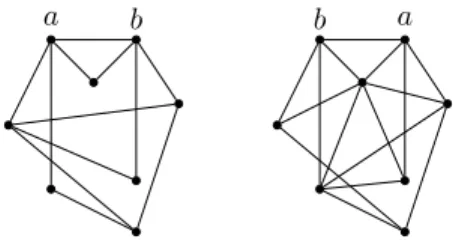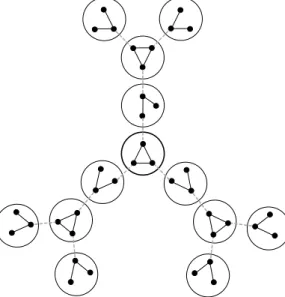Linear Rank-Width of Distance-Hereditary Graphs I. A Polynomial-Time Algorithm
Texte intégral
Figure




Documents relatifs
Unit´e de recherche INRIA Rennes, Irisa, Campus universitaire de Beaulieu, 35042 RENNES Cedex Unit´e de recherche INRIA Rh ˆone-Alpes, 655, avenue de l’Europe, 38330 MONTBONNOT
A more natural notion of rank-width based on countable cubic trees (we call it discrete rank-width) has a weaker type of compactness: the corresponding width is at most twice the
As a new attempt in this direction, our initial motivation for this paper was to design a quasi linear-time algorithm for Maximum Matching on distance-hereditary graphs and some
It is trivial to conclude that since Compute Label computes correctly the label of the whole rooted cactus (Lemma 5), Longest Cactus computes the length of a longest path in it..
In the stressed rats, we detected more pairs of PFC-PLs neurons and SPNs with significant short-time interaction starting immediately after PFC-PL burst (control: 2/30,
Checkout DV-hop algorithm estimates the mobile node position by using the nearest anchor, while Selective 3-Anchor DV-hop algorithm chooses the best 3 anchors to improve
The “self-adjoint” approximation for the full-Stokes problem is detailed in terms of equations and presented as a limited case of the reverse accumulation method used to compute
This is also supported by our estimated proportion of chronic pain sufferers with neuropathic characteristics in the general population (25 of sufferers of chronic pain of at